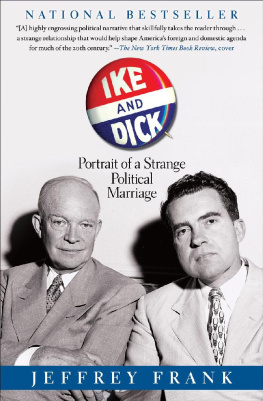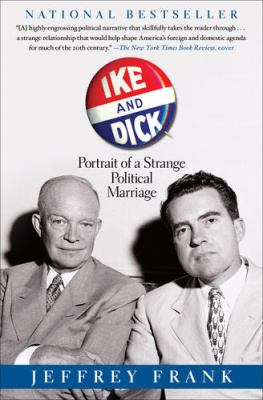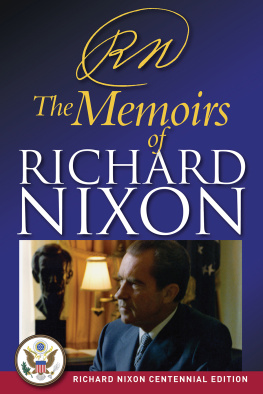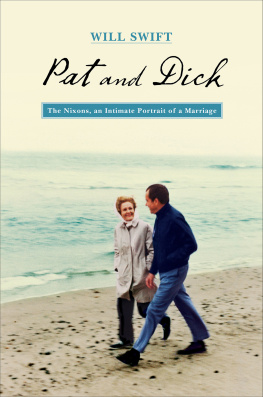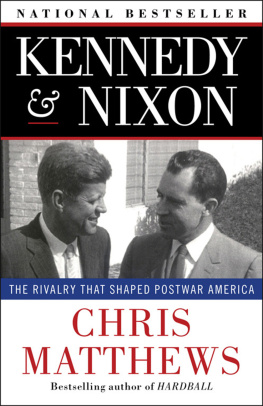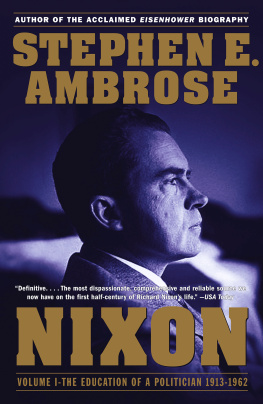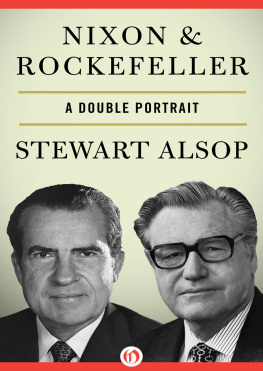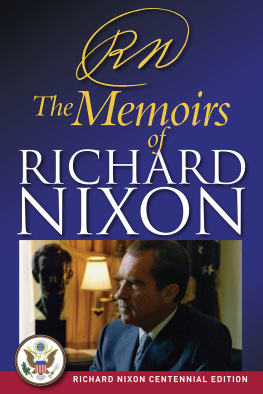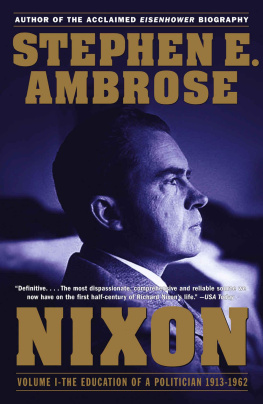ACKNOWLEDGMENTS
Priscilla Painton, Simon & Schusters executive editor, saw me through this project with energy, creative intelligence, and a sympathetic appreciation of what I was up to. I was wildly lucky to work with her and also fortunate to have the wholehearted backing of our publisher, the ingenious Jonathan Karp. Its my fourth book with Simon & Schuster, and Im always mightily impressed. Publicity manager Anne Tate and marketing manager Nina Pajak gave me terrific advice. The production manager John Wahler (then) and Lisa Erwin (now); senior production editor Lisa Healy; designer Akasha Archer; associate editor Michael Szczerban; proofreader Bill Molesky, indexer Charles Newman, and copy editor extraordinaire Fred Chase were among those who made every page better.
Its sometimes hard to say how a book gets started, but in this case it came out of conversations with the talented Sarah Hochman and the publisher David Rosenthal, with whom Id talked about growing up in Washington when Eisenhower was president and Nixon could be spotted in the lower grandstand at Griffith Stadium. It was followed by an essential, enthusiastic push from Tina Bennett, a wise counselor, a brilliant critic, and a friend as well as my literary agent for more than a decade.
None of this would have gotten very far without the men and women at the National Archives and Records Administration (NARA), which oversees the presidential libraries. At the Dwight D. Eisenhower Presidential Library and Museum in Abilene, Kansas, Im particularly grateful to Valoise Armstrongfor her knowledge and all-around niceness, who was always able to help me solve riddles, even by long-distance. The librarys director, Karl Weissenbach; deputy director Tim Rives; audiovisual archivist Kathy Struss; and archives technicians Chalsea Millner and Catherine Cain all helped; retired archivist David Haight saved me at least once from embarrassment.
I was just as privileged at the Nixon Presidential Library and Museum in Yorba Linda, California, where my expert guide was Supervisory Archivist Gregory Cumming, who understood my absorption with the subject, and where more help came from archives technicians Craig Ellefson, Carla Braswell, Dorissa Martinez, and audio-video archives technician Pamla Eisenberg. The librarys former director, Timothy Naftali, brought the commitment of a serious historian; he was unfailingly supportive, as was Paul Wormser, who became acting director in 2011. Paul Musgrave, now a doctoral candidate at Georgetown University and formerly a special assistant to the director, gave me sound advice.
Relations between the Nixon Library, which is under the auspices of NARA, and the privately supported Richard Nixon Foundation have not been easy; in fact, thats understating years of mutual bad feelings between the Library, with its recent focus on Watergate, and the Foundation. But that had little or no effect on my project. I appreciated the openness and assistance I got from Richard (Sandy) Quinn, president of the Foundation; from his predecessor Ronald H. Walker, now chairman of the Foundation; and Cheryl Saremi, secretary to the Foundation. They had every reason to suspect my intentionsnot least because Id worked for a dozen years at The Washington Post but they trusted me to be fair. I hope they conclude that I was.
At the Hoover Institution at Stanford University, I owe an enormous debt to Mandy MacCalla, the executive assistant to the deputy director. Much appreciation goes to the librarian Paul Thomas, assistant archivist for reference, Carol A. Leadenham, and especially the audio specialist Jim Sam. The staff at the Manuscript Division of the Library of Congress was always accommodating, and particularly so were Mary Rich in the Law Library and Lewis Wyman. At Columbia Universitys Butler Library many thanks to Charis Emily Shafter; at the J. Willard Marriott Library at the University of Utah Im indebted to librarian Paul A. Mogren and especially to the moving image and sound archivist Molly R. Creel. Researcher Virginia Martin assisted with the Harold Stassen Papers at the Minnesota Historical Society; Kathy Petersen, at the Bowdoin College Library, led me through the papers of James Bassett. More thanks to Christian C. Goos, at the Gerald R. Ford Presidential Library; Eric R. Cuellar at the Lyndon B. Johnson Library; Sam Rushay, at the Harry S. Truman Library; the librarians at Olin Library, Cornell University and at the Multnomah County Library in Portland, Oregon; the documentarians George Colburn and Deborah Blum; Christine A. Lutz, at the Seeley G. Mudd Manuscript Library, at Princeton; the New York Society Library, and the indispensable New York Public Library.
Im especially obliged to those who read some early parts of the manuscript: the historian David Greenberg, who years ago warned me of the danger of Nixon obsession, made valuable and important suggestions; more good advice came from Jodie Allen, my smart former boss at The Washington Post , as well as two masters of nonfiction narrative, Philip Gourevitch and David Grann, friends and former New Yorker colleagues. Mary Norris, one of the magazines peerless O.K.ers, gave the book a painstaking read. Thanks also to Robert K. Nedelkoff; Skye Gurney, and those who were kind enough to come to my aid, among them: Chris Donovan, a producer with Meet the Press ; Katherine Connell, research director at National Review; Kenneth Adelman; Cynthia Bassett; Christopher Buckley; Mark Feldstein; Laurie Heineman; Michael Isikoff; David L. Robb; Adele Ruxton, whos in charge of the underfunded Indian Wells Historical Society and showed me around the Coachella Valley, where Eisenhower spent post-presidential winters; Yvette Siegert; my former assistant at The New Yorker , who volunteered valuable pro bono research, and Robbyn Swan, who went far out of her way to help. I have gratitude left over for the nearly seventy men and women who agreed to be interviewed and whose recollections and shrewd interpretations I appreciated and appropriated whenever I could. Above all, I relied on my amazing wife, Diana, for her acumen, support, and encouragement throughout this multiyear venture.
ABOUT THE AUTHOR
Jeffrey Frank was a senior editor at The New Yorker and the deputy editor of the Washington Post s Outlook section. He is the author of four novels, including the Washington Trilogy The Columnist, Bad Publicity , and Trudy Hopedale and the co-translator, from the Danish, of The Stories of Hans Christian Andersen . He lives in Manhattan with his wife, Diana Crone Frank. They have one son.

MEET THE AUTHORS, WATCH VIDEOS AND MORE AT
SimonandSchuster.com
DISCOVER MORE GREAT BOOKS AT 
http://authors.simonandschuster.com/Jeffrey-Frank/

CHAPTER 1

The Mens Club
Herbert Hoover, the last living Republican president in mid-century America (his predecessor, Calvin Coolidge, died in 1933), treasured his membership in the Bohemian Club, which was founded in San Francisco in 1872 as a center of western influence and wealth. Hoover had joined in 1913 and for most of his life kept an eye out for recruits who might enliven the Bohemian Grove, the clubs summer encampment, 2,700 acres covered by redwoods and situated seventy miles north of San Francisco. The motto of the Bohemian members is the Shakespeare line Weaving spiders come not herea warning to visitors to avoid self-promotion and networkingbut for many guests and members the whole point of the Club was precisely that, and for them the Grove each summer was a natural habitat for web-weaving spiders. Hoover regarded his annual weeks at the Grove as the greatest mens party on earth.

